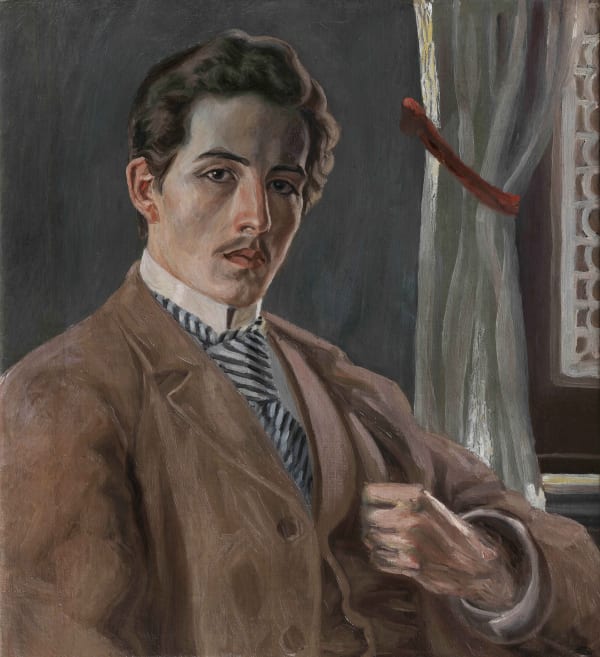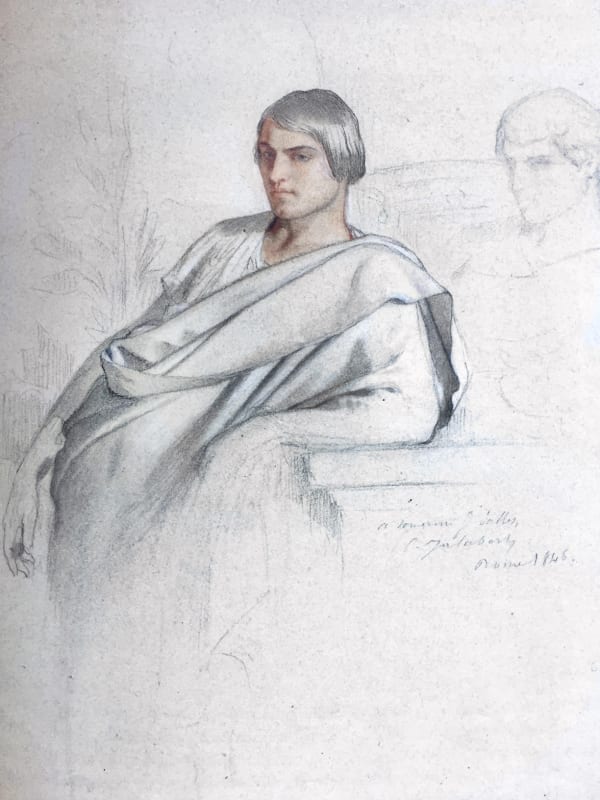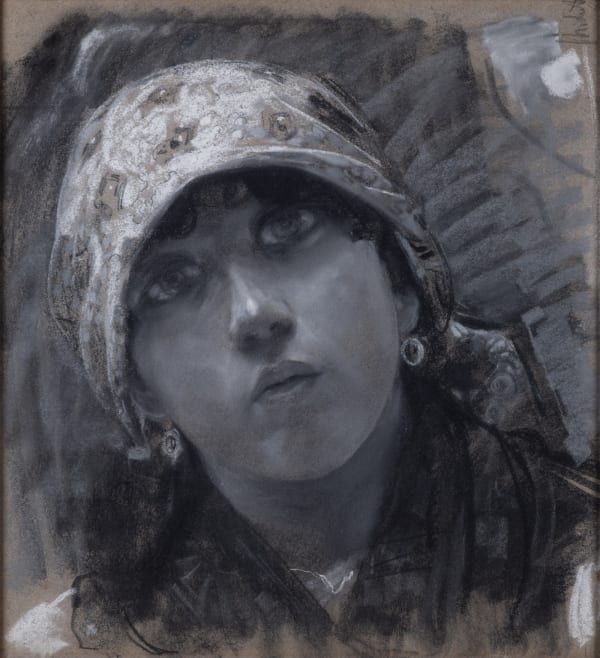Opera su carta realizzata dall'artista boemo Ernst Nepo

ERNST NEPO (Ernst Nepomucky) 1895, Dubá-1971, Innsbruck
Provenance
Artist’s heirs; private collection.
Exhibitions
Uno sguardo al passato, uno al futuro,Museo Rudolf Stolz di Sesto, Sesto, June 2017
Literature
Uno sguardo al passato, uno al futuro, exhibition catalogue, Museo Rudolf Stolz di Sesto, Sesto, June 2017, pag. 30.
“This I drew, using a mirror; it is my own likeness, in the year 1484,” wrote Albrecht Dürer in 1492 describing the creative process which led him to produce one of his most significant masterpieces. Four centuries later, in the same way, Ernst Nepo explored his image in the mirror, his hand held against his cheek and temple in a thoughtful attitude, inspired precisely by Dürer’s famous self-portrait from 1492 (FIG. 1).
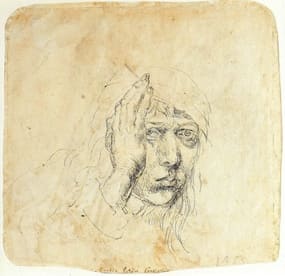
FIG. 1 - Albert Dürer, Self-portrait with blindfold, 1492
Although the representations of the 1920s show a formal expressive language strongly influenced by Egon Schiele (FIG. 2), and that of 1925 marks in an exemplary way the orientation of the artist towards Neue Sachlichkeit – New Objectivity (FIG. 3), the self-portrait being presented here was created by the artist during his training at the Institute of Applied Arts in Vienna under Alfred Roller, Adolf Böhm and Oskar Strnad.
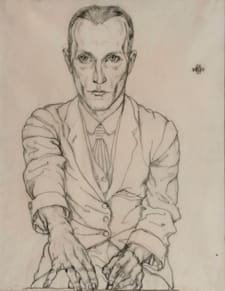
FIG. 2 - Ernst Nepo, Self-portrait, 1920
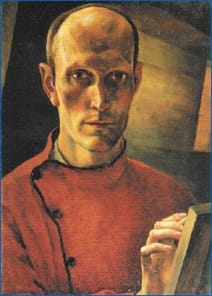
FIG. 3 - Ernst Nepo, Self-portrait, 1925
The self-portrait remained a favoured leitmotif of Nepo’s works, and here even more than elsewhere it represented a means to explore and interpret himself, and at the same time a field of formal experimentation. After serving in the First World War, in 1925 he co-founded the group of artists called “Wage”, and just a couple of years later became part of theVienna Secession. It was thanks to this connection that his works of this period were so strongly influenced by Giovanni Segantini and Egon Schiele.
After this first period closer to Secessionist and Expressionist currents, Nepo became fascinated by Neue Sachlichkeit, an artistic movement born in Germany at the end of the Great War as a reaction to Expressionism. The movement came to an end with the rise of the Third Reich, which termed it “Degenerate Art” (Entartete Kunst).
Despite the fact that not many of his works are typical of the Neue Sachlichkeit movement, Ernst Nepo is considered by international critics to be one of the most incisive exponents of this movement in Tyrol. The general public knows him above all for his portraits, his numerous frescoes, mosaics, and paintings on glass. His works are also kept at theTyrolean State Museumin Innsbruck, the University of Applied Arts collection in Vienna, and theMuseion – Museum of Modern and Contemporary Art – in Bozen (Bolzano).
-
 ERNST NEPO (Ernst Nepomucky)Sunset on the Dolomites, 1917
ERNST NEPO (Ernst Nepomucky)Sunset on the Dolomites, 1917 -
 ERNST NEPOSelf-portrait, 1920
ERNST NEPOSelf-portrait, 1920 -
 HILDING WERNERPortrait of Harry Werner, 1899
HILDING WERNERPortrait of Harry Werner, 1899 -
 Giovanna Ellero CelliniPortrait of Mario Benvenuto Cellini, 1924
Giovanna Ellero CelliniPortrait of Mario Benvenuto Cellini, 1924 -
 CHARLES-FRANÇOIS JALABERTVarius and Antinoo, 1846
CHARLES-FRANÇOIS JALABERTVarius and Antinoo, 1846 -
 GIOVANNI BATTISTA CREMAXX century, c. 1935
GIOVANNI BATTISTA CREMAXX century, c. 1935 -
 Serafino MACCHIATIL'aimant (The magnet), 1908
Serafino MACCHIATIL'aimant (The magnet), 1908 -
 FRANCESCO PAOLO MICHETTIHead of a Young Girl, 1890 c.
FRANCESCO PAOLO MICHETTIHead of a Young Girl, 1890 c.


